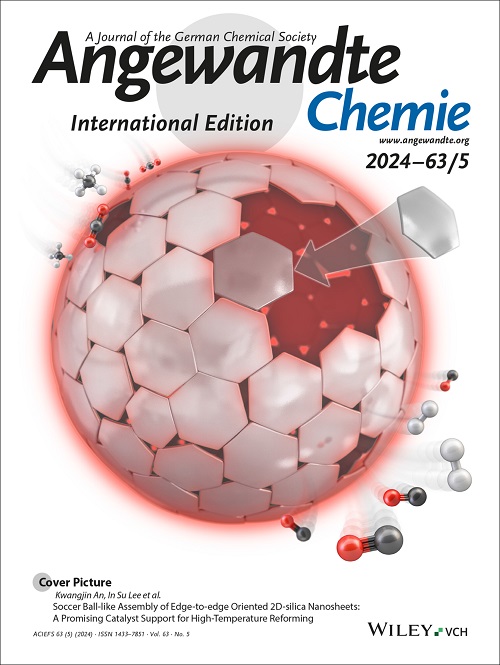Chiral Tin‐Oxo Cluster Matrices with Fluorophore Embedment for Multichromatic Circularly Polarized Luminescence
IF 16.1
1区 化学
Q1 CHEMISTRY, MULTIDISCIPLINARY
引用次数: 0
Abstract
Tin‐oxo clusters, characterized by their well‐defined chemical compositions and architectures, are multi‐metal aggregates composed of Sn‐oxide cores and surface ligands. Chirality, a fundamental characteristic governing biological recognition and signal transduction, remains underexplored in stannate clusters compared to extensively studied precious metal clusters. Herein, three enantiomeric pairs of chiral tin‐oxo clusters were constructed using axially chiral 1,1'‐binaphthol (BINOL) ligands. Structural analyses revealed supramolecular helical assemblies mediated by directional C‐H···p interactions, while circular dichroism (CD) spectroscopy confirmed their intrinsic chirality. Through an in‐situ doping engineering, non‐chiral fluorophores with distinct emission profiles were incorporated during chiral cluster crystallization, yielding composite materials exhibiting circularly polarized luminescence (CPL). The optimized system achieved a maximum dissymmetry factor (glum) of 1.5 × 10‐2. Mechanistic studies established that the spiral packing of the tin‐oxo clusters facilitates stereochemical information transfer to the dyes via spatial confinement effect. This supramolecular chirality induction paradigm offers new insights into the rational design of multifunctional optical materials.具有荧光团包埋的手性锡氧簇矩阵用于多色圆偏振发光
锡氧团簇是由锡氧核和表面配体组成的多金属聚集体,其化学成分和结构特征明确。手性是控制生物识别和信号转导的基本特征,与广泛研究的贵金属团簇相比,在锡酸盐团簇中仍未得到充分探索。本文利用轴向手性1,1′-联萘酚(BINOL)配体构建了三对手性锡氧簇。结构分析揭示了定向C - H··p相互作用介导的超分子螺旋组装,而圆二色性(CD)光谱证实了它们的固有手性。通过原位掺杂工程,在手性团簇结晶过程中加入具有不同发射谱线的非手性荧光团,得到具有圆偏振发光(CPL)的复合材料。优化后的系统最大不对称系数(glum)为1.5 × 10‐2。机理研究表明,锡氧簇的螺旋填充通过空间约束效应促进了立体化学信息向染料的传递。这种超分子手性诱导模式为多功能光学材料的合理设计提供了新的见解。
本文章由计算机程序翻译,如有差异,请以英文原文为准。
求助全文
约1分钟内获得全文
求助全文
来源期刊
CiteScore
26.60
自引率
6.60%
发文量
3549
审稿时长
1.5 months
期刊介绍:
Angewandte Chemie, a journal of the German Chemical Society (GDCh), maintains a leading position among scholarly journals in general chemistry with an impressive Impact Factor of 16.6 (2022 Journal Citation Reports, Clarivate, 2023). Published weekly in a reader-friendly format, it features new articles almost every day. Established in 1887, Angewandte Chemie is a prominent chemistry journal, offering a dynamic blend of Review-type articles, Highlights, Communications, and Research Articles on a weekly basis, making it unique in the field.

 求助内容:
求助内容: 应助结果提醒方式:
应助结果提醒方式:


